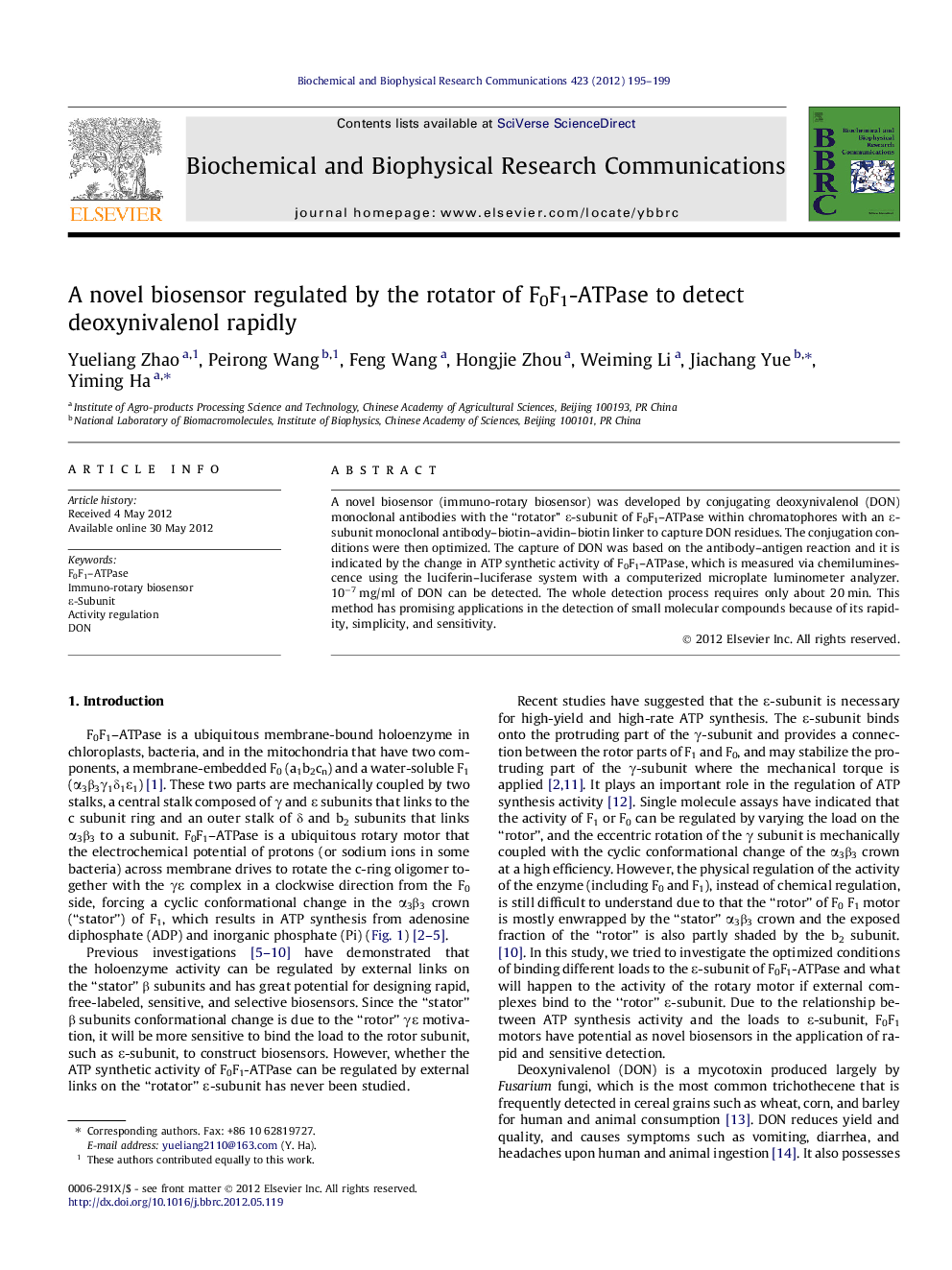| Article ID | Journal | Published Year | Pages | File Type |
|---|---|---|---|---|
| 1929461 | Biochemical and Biophysical Research Communications | 2012 | 5 Pages |
A novel biosensor (immuno-rotary biosensor) was developed by conjugating deoxynivalenol (DON) monoclonal antibodies with the “rotator” ε-subunit of F0F1–ATPase within chromatophores with an ε-subunit monoclonal antibody–biotin–avidin–biotin linker to capture DON residues. The conjugation conditions were then optimized. The capture of DON was based on the antibody–antigen reaction and it is indicated by the change in ATP synthetic activity of F0F1–ATPase, which is measured via chemiluminescence using the luciferin–luciferase system with a computerized microplate luminometer analyzer. 10−7 mg/ml of DON can be detected. The whole detection process requires only about 20 min. This method has promising applications in the detection of small molecular compounds because of its rapidity, simplicity, and sensitivity.
► A novel biosensor regulated by the rotator of F0F1–ATPase was developed. ► The construction conditions of the novel biosensor were optimized. ► The ATP synthesis activity is activated by external links on the ε-subunit. ► 10−7 mg/ml of DON can be detected using this novel biosensor. ► The whole detection process requires only about 20 min.
